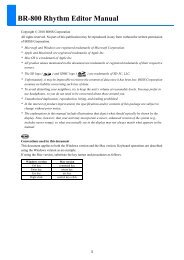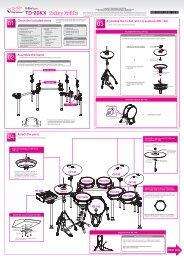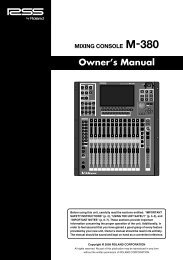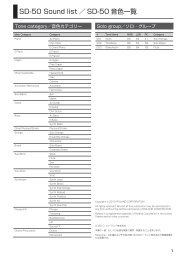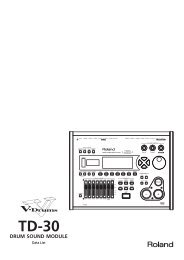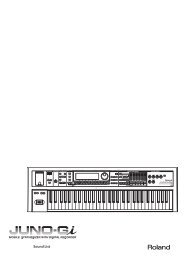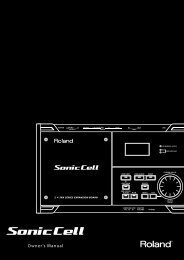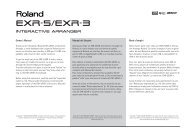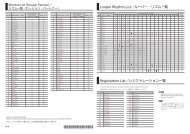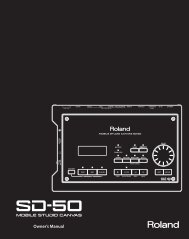GAIA Exploring Sound (PDF) - Roland Corporation Australia
GAIA Exploring Sound (PDF) - Roland Corporation Australia
GAIA Exploring Sound (PDF) - Roland Corporation Australia
Create successful ePaper yourself
Turn your PDF publications into a flip-book with our unique Google optimized e-Paper software.
Step Two<br />
Now copy TONE 1 to both TONE 2 and TONE 3. Then, after<br />
checking that all three TONES are the same, turn off TONES 2<br />
and 3, and make sure TONE 1 is selected for editing.<br />
Follow this Action List for TONE 1.<br />
Figure 9.4 Step Two<br />
Step Three<br />
Now switch on TONE 2, switch off TONE 1, and make Sure TONE<br />
2 is selected for editing (it will be on by default).<br />
Follow the Action List in Figure 9.5.<br />
Figure 9.5 Step Three<br />
To make the “players” sound slightly out of tune we have added a<br />
little modulation, or vibrato. Notice that we haven’t bothered to<br />
change the vibrato rate. This is because the default rate created<br />
by initializing the patch is close enough.<br />
We have also added some detune to TONE 1, although it’s hard<br />
to hear without the other TONES.<br />
Audio 9.2 Synth Strings Step Two<br />
This time we are using a different wave shape. Why?<br />
We have been trying to emphasize the pitch differences of a large<br />
orchestra. So far, we have been using detune and vibrato. This<br />
time we have added another type of modulation. To do this we<br />
have chosen the Pulse wave. Notice that we have chosen<br />
variation 3. This is because that particular Pulse wave sounds a<br />
little more like a string sound.<br />
Then we have added some Pulse Width Modulation, and lowered<br />
the rate so that it will sound very different to the vibrato we used<br />
for TONE 1. Another subtle difference.<br />
108




